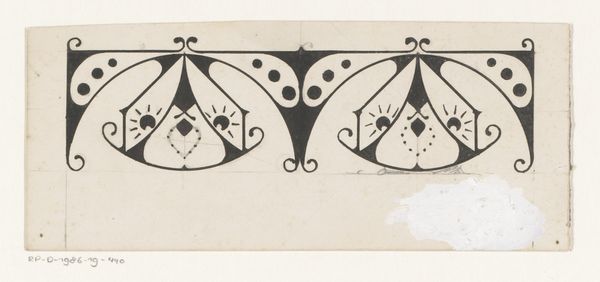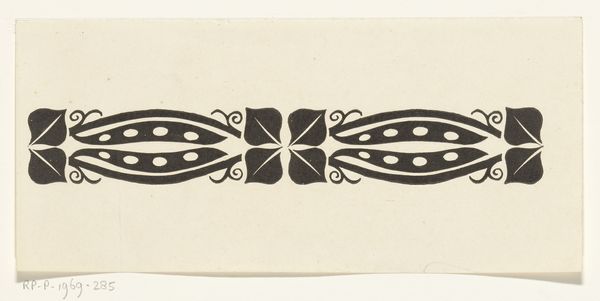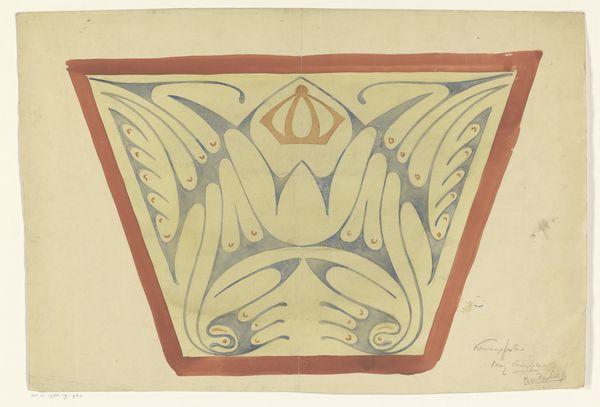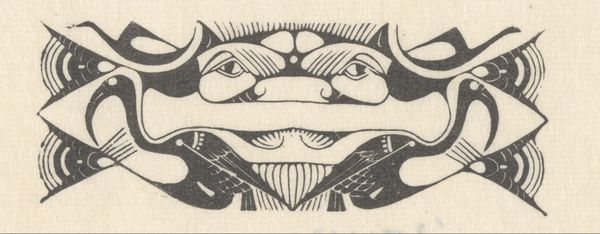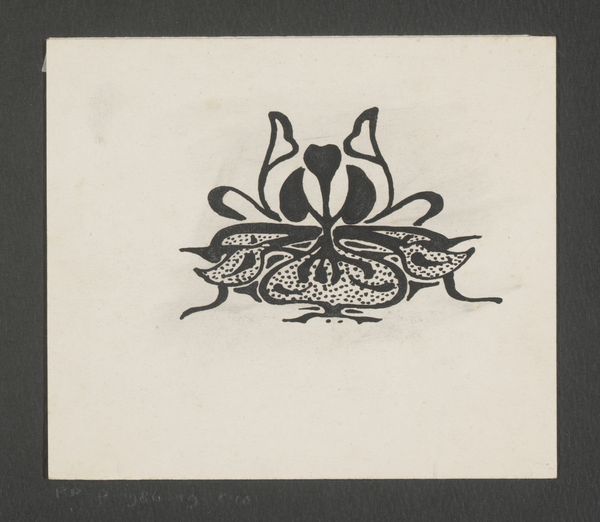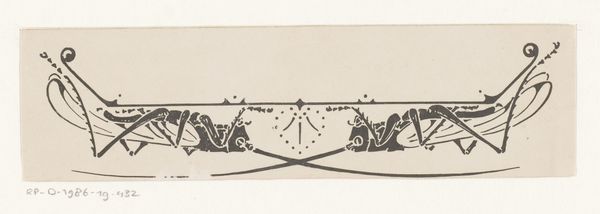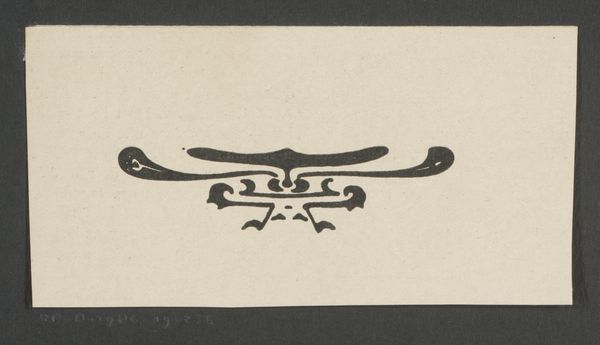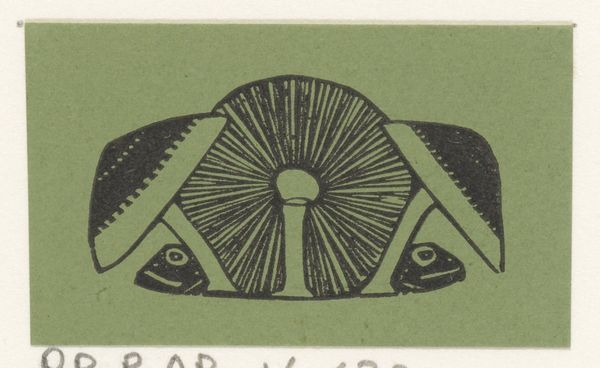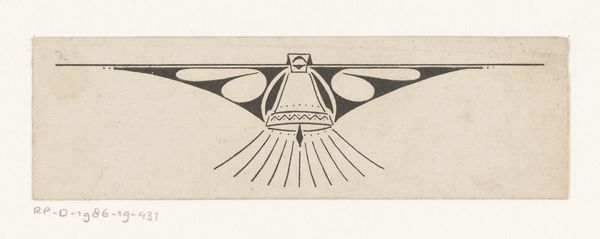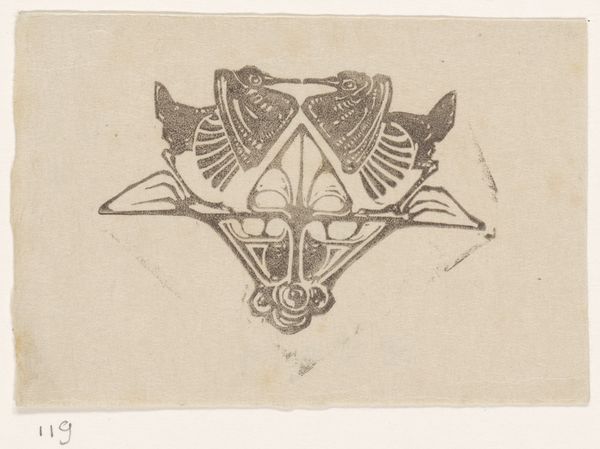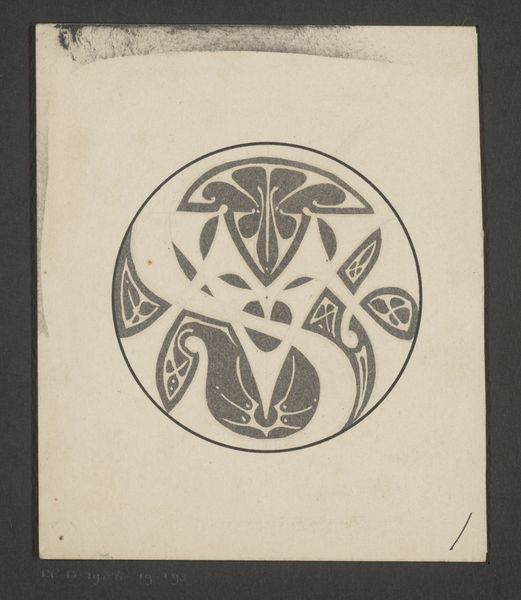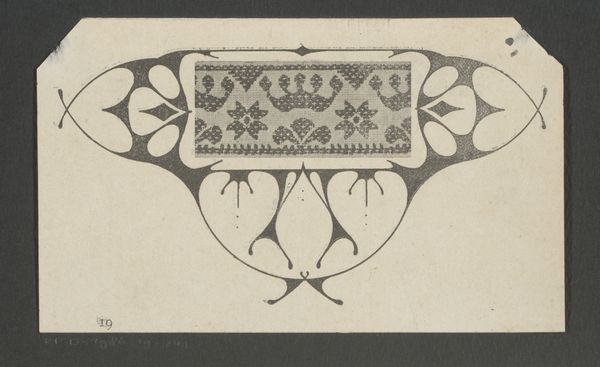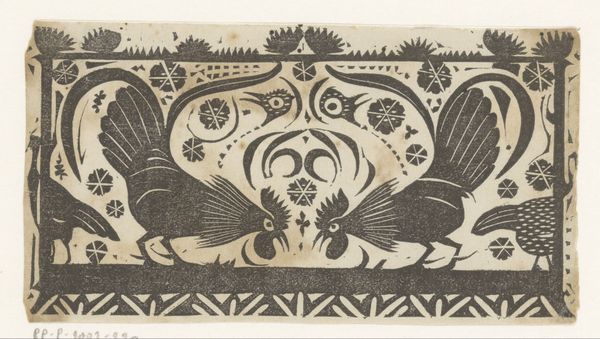
drawing, ink, pen
#
drawing
#
light pencil work
#
art-nouveau
#
shading to add clarity
#
sketch book
#
hand drawn type
#
personal journal design
#
personal sketchbook
#
ink
#
geometric
#
pen-ink sketch
#
thin linework
#
sketchbook drawing
#
pen
#
decorative-art
#
sketchbook art
Dimensions: height 57 mm, width 104 mm
Copyright: Rijks Museum: Open Domain
Editor: This is "Vignet," a pen and ink drawing by Reinier Willem Petrus de Vries, created sometime between 1884 and 1952. I find the stylized design, almost like a logo, to be really striking. What do you see in this piece? Curator: The clean lines and geometric forms immediately call to mind the Art Nouveau movement, a style deeply entwined with ideas about progress and societal transformation at the turn of the 20th century. What kind of progress do you see represented here, if any? Editor: I hadn’t considered it that way, but the simplified, almost industrial aesthetic makes me think about moving forward and simplification of art for wider consumption. Curator: Precisely! The image speaks to that burgeoning sense of modernity and mass production. But let’s delve a bit deeper. Notice how the insect-like motif at the center is abstracted yet still recognizable. How might that connect to broader artistic and cultural shifts of the period? Editor: I suppose that's also related to the Art Nouveau movement’s relationship with natural motifs, like stylized flowers or insects… kind of taking them and then reforming them for the public’s needs. Curator: Exactly. There's an underlying tension here, between a desire to honor the natural world and a concurrent need to reshape and control it. And what about the choice of materials? Pen and ink, readily available and easily reproduced… how might that be significant? Editor: That does make a lot of sense, it brings back to mind the easy distribution to the public that would’ve been part and parcel with the progressive attitude in Europe at the time. Curator: Thinking about how we engage with images of nature in our contemporary context, particularly amidst environmental crisis, is there something to be said about the colonial nature of controlling images of nature? How have we come to see our own history? Editor: That's a powerful way to frame it. The image starts a dialogue around not only the natural and man-made but of that power dynamic. Thank you! Curator: It has been my pleasure. It's about understanding historical and cultural power.
Comments
No comments
Be the first to comment and join the conversation on the ultimate creative platform.
